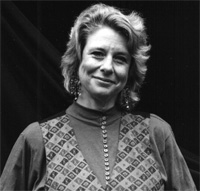 Nineteen-Sixty
Nineteen-Sixty
I wasn't aware I lived a defining moment in history
at Greensboro College, a comfortable girls' school;
morning chapel required on Tuesdays, dinner served
at tables of eight. On Sundays I wore skin
toned nylon stockings and lipstick; rode a bus
to the church of my choice where Jesus' portrait portrayed
a nicely tanned white man, glowing with earned sweat.
A handsome man we girls could appreciate. I was one
of a multitude of females destined to be teachers.
In first grade, I graduated from empty picture books
to important exciting words on paper. The letters were black,
the pictures, primary; Dick and Jane's skin a sly vanilla. Living
was easy in crayon blue sky with a box-house and half a yellow sun
in the corner where they played and spoke a bland language.
See Dick. See Jane. See Jane run. Keep the cardboard
straight under each line and sound out the words, kids.
The sky is up. Grass is green. Your parents are off-stage,
a typical Caucasian family of four plus dog.
I wasn't a negative girl. No thoughts at all.
Art was my interest. Unwittingly I chose well.
I learned colors for every season, celebration and situation.
I could distinguish white, off-white, cream, ivory, beige,
tan, eggshell, ghost, magnolia, old lace, pearl, seashell
vanilla and everything in between, such as freckles.
A café au lait girl in my dorm with a speech impediment
was asked to leave Woolworth's uptown lunch counter
early in 1960. Besides having a suspicious skin color
she sounded funny. It was acceptable to look through
an off-color person who sat hungry, waiting. The waitress
would smile at a pale face; What you havin', honey?
Ain't it hellishly cold? Pencil to pad, glancing up
surreptitiously defining each customer with her whitened heart.
One day in January four chilled ebony men sat down
at Woolworth's lunch counter and waited, a still life
in determination. A newsman flashed a camera
as an older white lady stood up, leaving her coffee
and sweet-bun, to declare "Boys, I'm proud of you."







